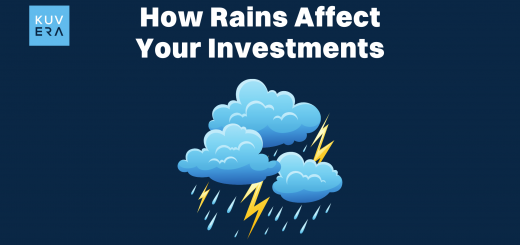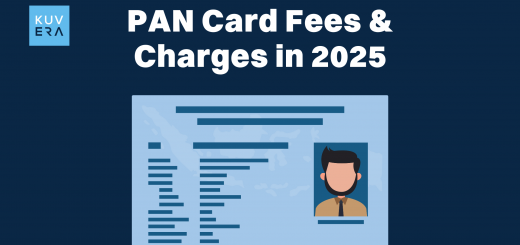Passive investing in the form of Index Funds was slow to take off in India, where actively managed mutual funds ruled the roost for the longest time. But with time, it is slowing picking pace with more and investors eager to invest in stocks, mutual funds and other securities.
Today, while actively managed funds still dominate the Indian mutual fund universe, passive investing, especially via index mutual funds, has begun to gain traction, particularly among young investors who are beginning to wet their toes in the Indian stock market and are looking to gain equity exposure.
But why are investors taking to passive investing when there is a plethora of well-known actively-managed mutual funds that have done reasonably well over the past years and have delivered handsome returns for their investors?
Perhaps the biggest draw that is attracting the retail Indian investor to passive index funds is the difference in costs, or expense ratios, among both these categories of investment vehicles.
Inexpensive Passive Funds vs Expensive Active Funds
So, how big is the cost difference between passive and active mutual funds? And how does this difference impact investment returns? Moreover, is this difference in returns good enough for an investor to choose passive funds over actively managed ones?
Expense ratios of passive funds can be as low as a fourth of comparable active funds, even as they can deliver the returns being generated by the index they are tracking. Active managers who run funds with high expense ratios are increasingly finding it difficult to beat their benchmark returns on a net return basis.
Over the last year, while the 30-share Sensex has delivered around 22% return, the 50-stock Nifty has returned around 26% (as of April 24, 2024). Hence, the index funds tracking these respective indices have delivered similar returns, which many actively managed large-cap mutual funds have found tough to beat. This, while the latter has expense ratios that are just a fraction of the former.
Here are the top 12 Mutual Fund plans based on the lowest expense ratio:
Lower expense ratios increase the net returns these index funds offer, providing higher effective returns on a compounded basis over several years. Little wonder then that index funds have gained in popularity.
The Case for Active Management: Does it Still Work?
Actively managed funds charge higher expense ratios as they ostensibly look to beat returns of the underlying indices they are tracking. They try to replicate returns that investors may be able to get if they were to actively manage a direct stock portfolio themselves. Most small investors do not have the wherewithal, time, or ability to conduct due diligence on the companies they wish to hold. This is how active mutual fund managers justify charging higher expense ratios. By outsourcing active management of their money to fund managers, investors can spend their time more efficiently, managing other activities and possibly improving their earning potential.
But in recent times, most large-cap-focused actively-managed mutual funds have not managed to outperform index funds over a three- to five-year horizon. The fact that they have not been able to generate alpha has meant that such active funds, especially in the large-cap space, have largely lost their raison d’être vis-à-vis index funds and ETFs.
Passive Investment Funds: Other Advantages
But costs aside, passive investment funds offer other advantages over actively-managed mutual funds. For one, they help investors avoid fund manager biases against any particular sector or company that they may believe will not offer good returns going forward. Fund managers can often turn cautious on investing in companies in such sectors, potentially missing out on returns that such index stocks may offer. In that respect, passive index mutual funds also have an inherent advantage, in that there is no fund manager risk since the process of stock picking is automated as it follows a set index.
The Case for Low-Cost Active Mutual Funds
As passive investment products have begun taking off, some asset management companies that offer actively-managed funds have also begun offering options that have costs comparable to some of the index mutual funds. But even some of the low-cost active mutual funds have expense ratios between 0.38% and 0.74%.
Even as these costs are on the lower end, they are still higher than those of pure index mutual funds. So, even as some lower-cost options have emerged on the scene, from an overall absolute net returns perspective, passive index funds continue to make perfect sense for retail investors.
Conclusion
Passive investment options, including index mutual funds, have come a long way in India and are gaining popularity. One major reason for this is that they offer low-cost options to investors while offering returns comparable to those of actively-managed funds. Lower costs mean higher effective returns year after year, on a compounded basis. Over time, the difference in returns being offered by index funds can be substantially higher than those of actively managed funds.
Passive funds are an attractive option for investors looking to build wealth efficiently and effectively. You can open an account in Kuvera to help manage your investments by setting life goals.
FAQs
What is passive investing?
Passive investing involves buying and holding a diversified portfolio that mirrors a market index. The goal is to match the index’s returns with minimal trading and lower management fees.
Why has passive investing gained traction among young investors in India?
Young investors are attracted to passive investing due to its simplicity, lower costs, and ease of access through digital platforms. They are increasingly looking for equity exposure without the need for constant market monitoring.
How do expense ratios compare between passive and active funds?
Expense ratios of passive funds are usually as low as a fourth of comparable active funds. This significant cost difference can impact investment returns, with passive funds often offering higher net returns due to lower fees.
How have index funds performed compared to actively managed funds?
Index funds typically deliver returns similar to their underlying indices. Over the last year, for example, the Sensex delivered around 22% and the Nifty around 26%, which many actively managed large-cap funds struggled to beat.
What are the benefits of lower expense ratios in passive funds?
Lower expense ratios in passive funds mean that more of the returns are kept by the investor. Over several years, this can result in higher effective returns on a compounded basis.
Do actively managed funds justify their higher costs?
Actively managed funds charge higher expense ratios because they aim to beat the benchmark indices through expert stock selection and market timing. However, many have struggled to consistently outperform their benchmarks, especially in the large-cap space.
What are the advantages of passive funds besides lower costs?
Passive funds help investors avoid fund manager biases and the risk associated with active management. The stock selection process is automated and follows a set index, reducing the potential for human error and market speculation.
Are there low-cost active mutual funds available?
Some asset management companies offer actively-managed funds with lower expense ratios, comparable to some index mutual funds. However, even these low-cost active funds generally have higher fees than pure index funds.
Why might passive funds be a better choice for retail investors?
For retail investors, passive funds offer a straightforward, low-cost investment option with returns that are consistent with the broader market. This makes them an attractive choice for those looking to invest without the need for active management.
Interested in how we think about the markets?
Read more: Zen And The Art Of Investing
Watch here: Expert Insights for Smart Investing
Start investing through a platform that brings goal planning and investing to your fingertips. Visit kuvera.in to discover Direct Plans and Fixed Deposits and start investing today.












